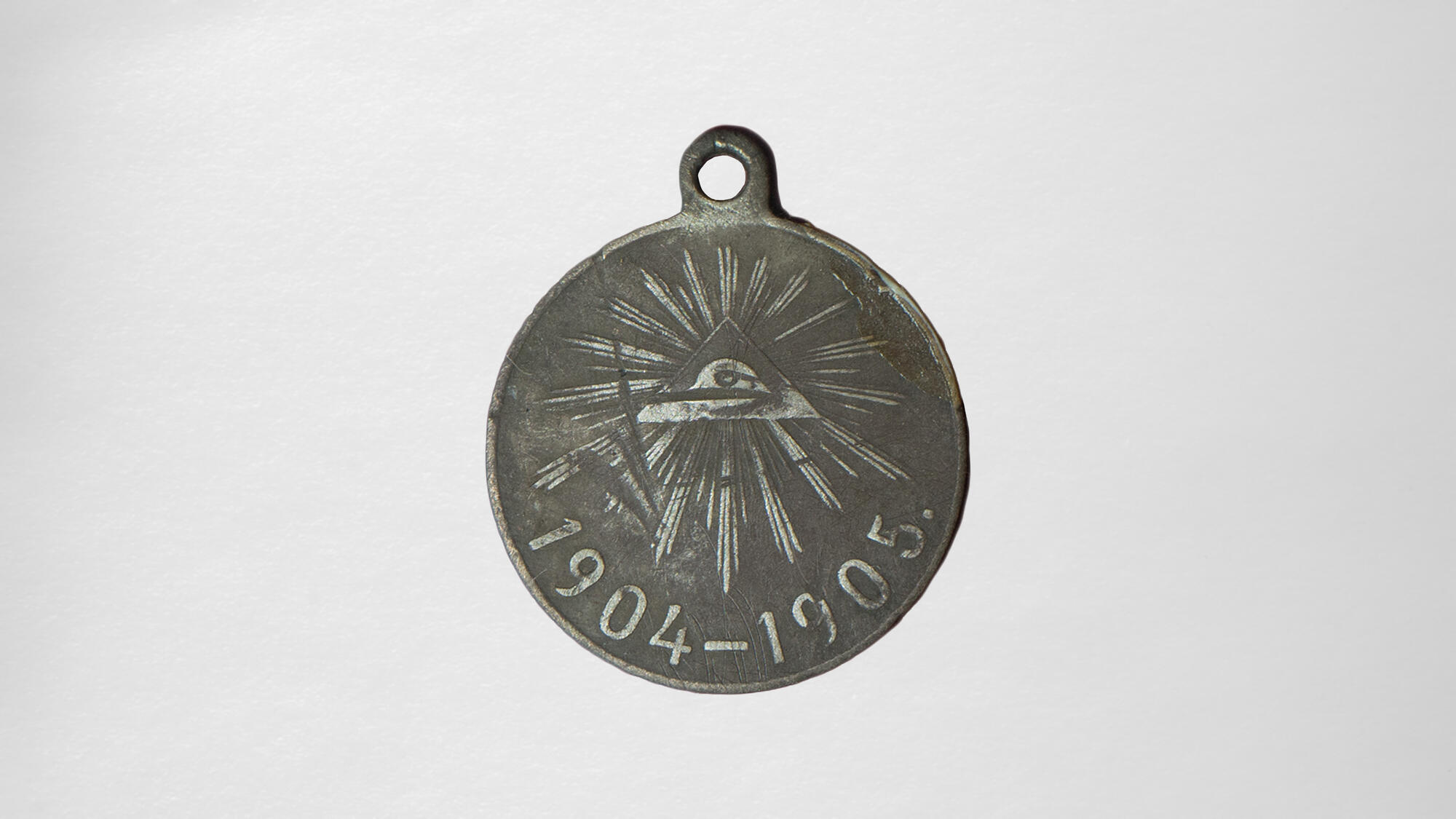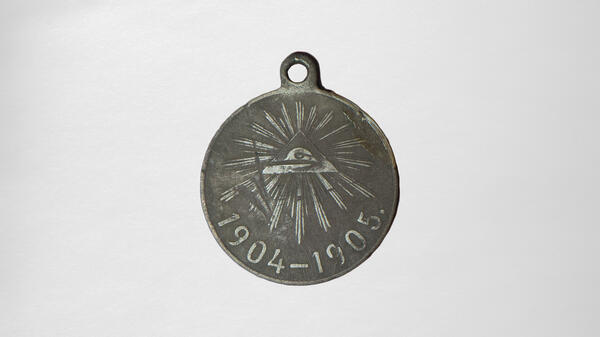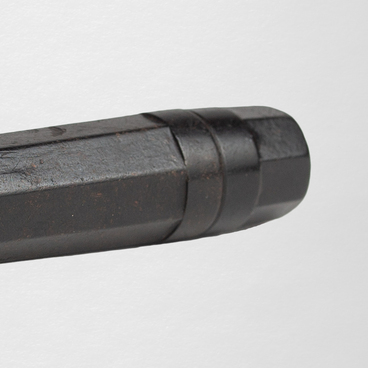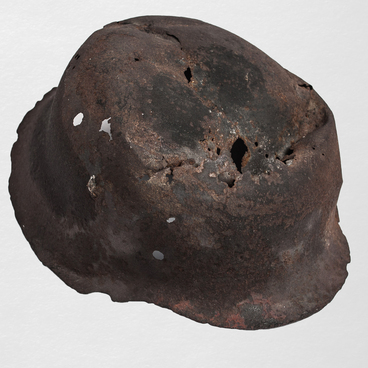Medal ‘In Memory of the Russo-Japanese War of 1904–1905’ was made at the Saint Petersburg Mint in the first half of the 20th century. It belonged to Tikhon Semibratov, who participated in the siege of Port Arthur, the longest battle of the Russo-Japanese War. The exhibit was given to the museum by the son of the medal’s owner, Grigory Semibratov, in 1983.
The medal was instituted by a special decree of Emperor Nicholas II in January 1906. In the Russian Empire, it was awarded to participants of sea and land battles. Grand Duke Georgy Mikhailovich created the design drawings and inscriptions. The award was made in three versions: silver, bronze and copper. A total of 45,000 silver, 700,000 light bronze, and 750,000 dark bronze (copper) medals were minted at the Saint Petersburg Mint.
The phrase “May God lift you up in due time” was placed on the obverse of the medal. The inscription was an indirect quotation from the First Epistle of St. Peter. In the Bible it sounded like: “So humble yourselves under the mighty hand of God, that he may lift you up in due time.”
A sign in the shape of an isosceles triangle with an open eye inside was placed on the reverse. It was used in Christianity and Freemasonry as a symbol of the all-seeing higher powers. In Christianity, the eye was associated with the wise and all-powerful God, who was always watching over everything on earth. The triangle in Christian tradition was interpreted as a sign of the Trinity.
In Freemasonry, the symbol was called the “All-Seeing Eye of Freemasons”, which symbolized the holy Absolute — the supreme force. Over time, the sign went beyond the confines of religious traditions and began to be used for other purposes. For example, in 1782, the triangle was depicted on the reverse side of the Great State Seal in the United States, and now this symbol is present on the dollar bill.
Russia also used the “All-Seeing Eye of Freemasons”. Under Peter the Great’s rule, it was depicted in the center of military banners. The sign was also present on silver and bronze Russian medals ‘In Memory of the Patriotic War of 1812’, which were established by Emperor Alexander I.
The medal was instituted by a special decree of Emperor Nicholas II in January 1906. In the Russian Empire, it was awarded to participants of sea and land battles. Grand Duke Georgy Mikhailovich created the design drawings and inscriptions. The award was made in three versions: silver, bronze and copper. A total of 45,000 silver, 700,000 light bronze, and 750,000 dark bronze (copper) medals were minted at the Saint Petersburg Mint.
The phrase “May God lift you up in due time” was placed on the obverse of the medal. The inscription was an indirect quotation from the First Epistle of St. Peter. In the Bible it sounded like: “So humble yourselves under the mighty hand of God, that he may lift you up in due time.”
A sign in the shape of an isosceles triangle with an open eye inside was placed on the reverse. It was used in Christianity and Freemasonry as a symbol of the all-seeing higher powers. In Christianity, the eye was associated with the wise and all-powerful God, who was always watching over everything on earth. The triangle in Christian tradition was interpreted as a sign of the Trinity.
In Freemasonry, the symbol was called the “All-Seeing Eye of Freemasons”, which symbolized the holy Absolute — the supreme force. Over time, the sign went beyond the confines of religious traditions and began to be used for other purposes. For example, in 1782, the triangle was depicted on the reverse side of the Great State Seal in the United States, and now this symbol is present on the dollar bill.
Russia also used the “All-Seeing Eye of Freemasons”. Under Peter the Great’s rule, it was depicted in the center of military banners. The sign was also present on silver and bronze Russian medals ‘In Memory of the Patriotic War of 1812’, which were established by Emperor Alexander I.



